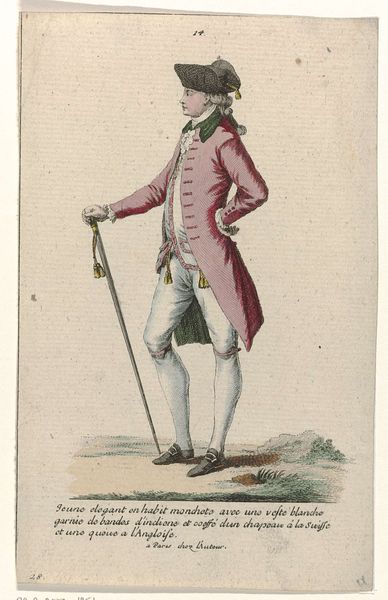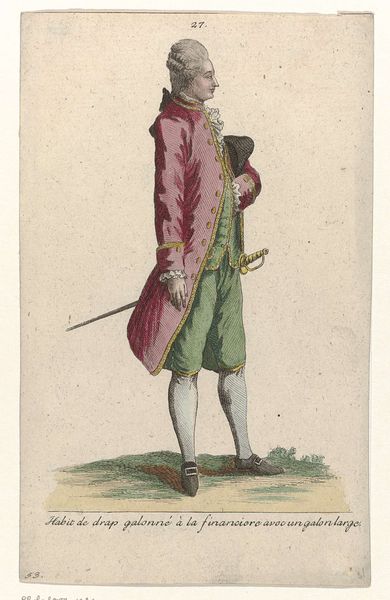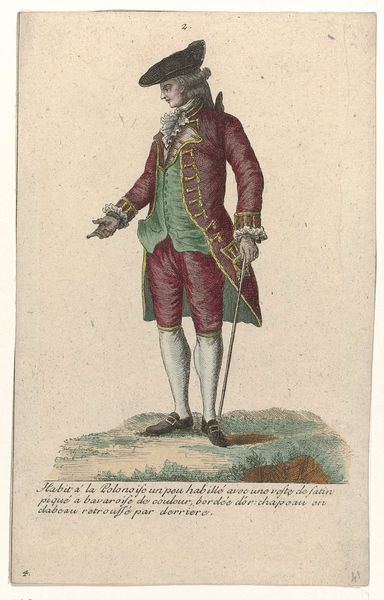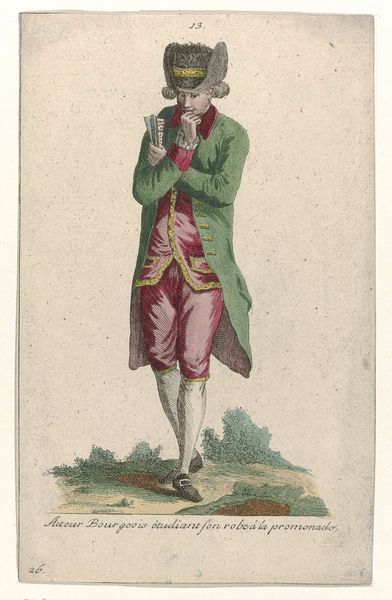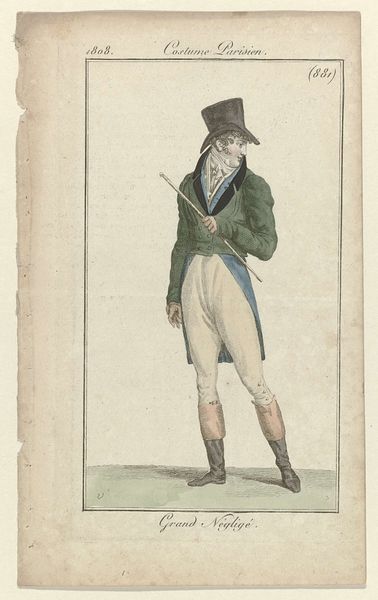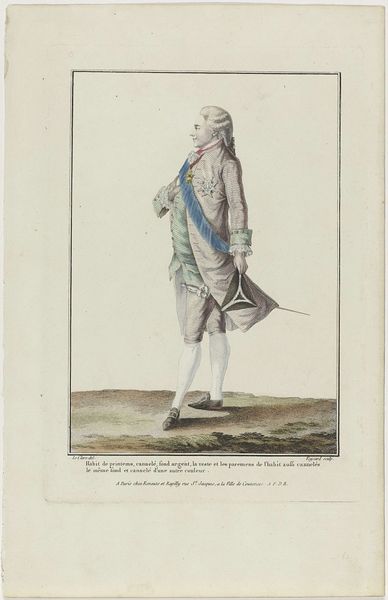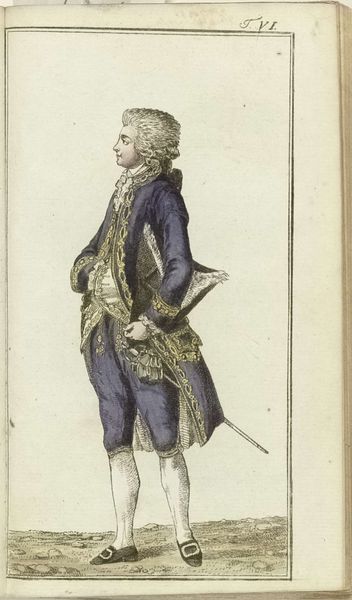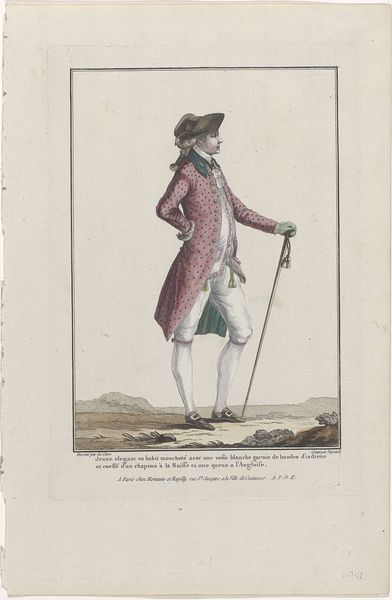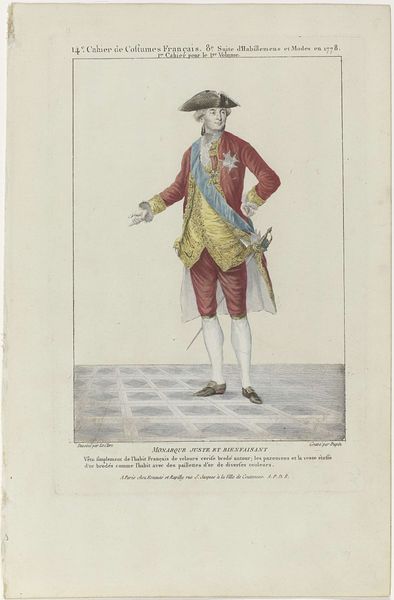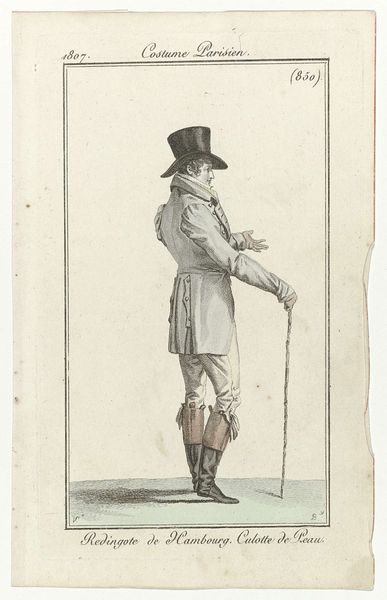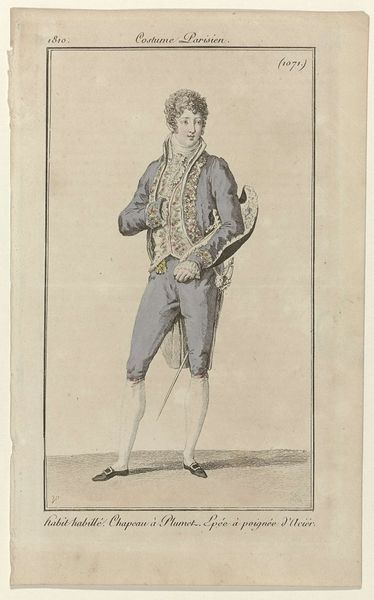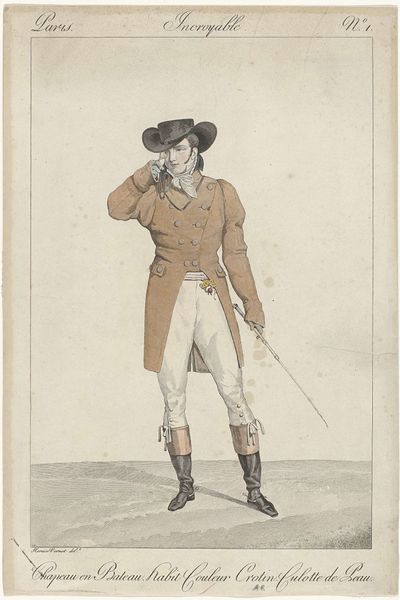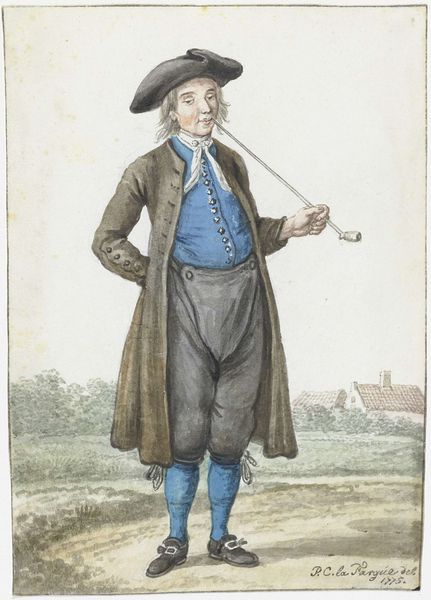
Gallerie des Modes et Costumes Français, 1785, nr. 11, nr. 21, Kopie naar R 99 : Fraque a coqueluchon de pluch (...) c. 1785
0:00
0:00
print, engraving
#
portrait
#
neoclacissism
# print
#
genre-painting
#
engraving
Dimensions: height 177 mm, width 111 mm
Copyright: Rijks Museum: Open Domain
Curator: Let's examine this engraving titled "Gallerie des Modes et Costumes Français, 1785, nr. 11, nr. 21, Kopie naar R 99 : Fraque a coqueluchon de pluch (...)," dating back to around 1785. Editor: Immediately striking is the pose, so self-assured. The vibrant hues against the parchment background signal privilege and perhaps, a commentary on the fleeting nature of fashion itself. Curator: Indeed. It embodies the Neoclassical obsession with order and taste, disseminated through prints to influence wider society. These "fashion plates" played a pivotal role in constructing and maintaining social hierarchies. Editor: The focus on minute detail of costume reads like a taxonomy of status. Note the fabrics, the cut of the coat, even the angle of the cane—all communicating an adherence to an exclusive code. Curator: Precisely! These prints documented and codified elite fashions for emulation by the burgeoning middle class. The desire for upward mobility fuelled the industry that created these aspirational images. Editor: But beyond the economics, what are we saying about ideal masculine identity here? He’s presented as nonchalant, almost ornamental—his role seems purely performative within the rigid structures of the time. Curator: I agree. The prints did, in effect, regulate behavior. By visualizing ideals of fashionable appearance, these images served as social control mechanisms, prescribing conduct in gendered terms. Editor: It's interesting to think about the impact on the men who were forced into this visual script. How did those performances affect their sense of agency, belonging, or even masculinity, knowing that you could either belong or not? Curator: These reflections point us to broader inquiries of gender, class, and political power. The Neoclassical order valued clarity and containment. By observing what’s considered elegant and civilized in one era, we find what might be silenced or excluded. Editor: I find myself questioning the very notion of 'good taste' reflected here, knowing what violent and oppressive socioeconomic systems upheld this specific ideal. Curator: Thinking critically, acknowledging the layers and questioning aesthetics gives the piece a new life beyond fashion trends.
Comments
No comments
Be the first to comment and join the conversation on the ultimate creative platform.
